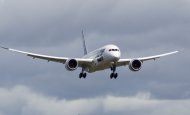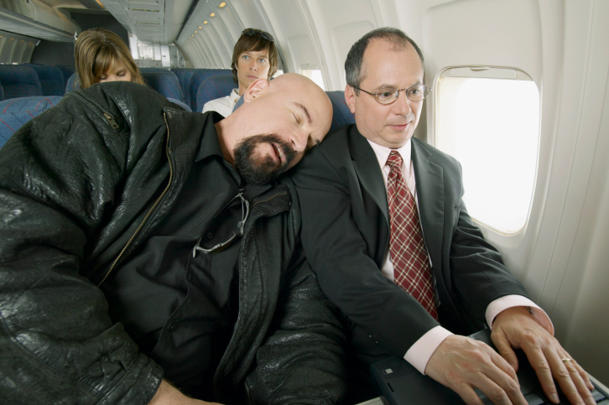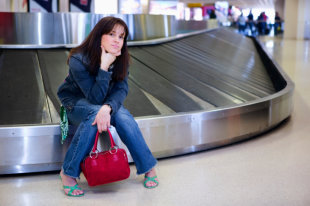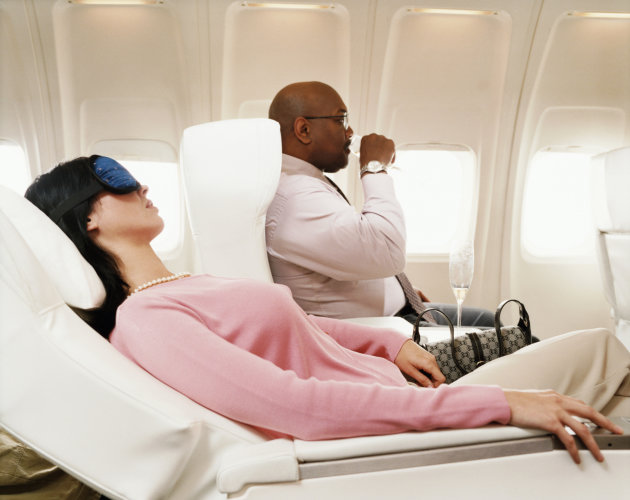Source: The Chicago Tribune; Aug. 8, 2013
Tougher commercial pilot training rules that took effect this month will make America's skies safer, federal officials say, but aviation experts and veteran pilots argue that the costly changes are overreaching, off-target and creating crew shortages, all while doing little to improve safety.
The changes, which affect regional carriers and increase the minimum flight time required to be a co-pilot from 250 to 1,500 hours, came in response to a 2009 plane crash in Buffalo, N.Y., that killed 50 people.
The Federal Aviation Administration argues that the tougher qualifications for co-pilots, or first officers, will ensure that pilots have a stronger foundation of aeronautical knowledge and the proper experience to fly for an airline and to fly specific airplane models to which they are assigned.
Independent experts and pilots, however, say skilled aviators are the product of a rigorous, high-quality training program, not the number of hours they log in the cockpit.
"I used to think that flight time was a measure of everything," said Bill Parrot, a retired American Airlines captain who teaches aviation at Lewis University in Romeoville. "I flew with a guy with 10,000 hours in the military who scared the hell out of me. It was a reality check.
"Flight time can mean you survived this far based on luck," he said. "It does not equate to proficiency and certainly not to professionalism."
The pilot shortage resulting from the new rules has prompted some regional carriers, which pay among the lowest pilot salaries in the industry, to offer signing bonuses of $5,000 to $10,000 to the shrinking pool of job-seekers who meet the new minimum standards, airline officials said.
Despite the mandated extra hours, those new hires still might not be ready or possess the aptitude — or as aviators might say, the "right stuff" — to become professional flying aces, according to veteran airline pilots, airline flight instructors and pilot career counselors.
The shortage also comes as many senior pilots working at major airlines are reaching the mandatory retirement age of 65. The retirement wave will open up spaces for captains at regional airlines to cross over to work at major airlines and, in turn, create more openings for captains and first officers at regional airlines, officials said.
One reason for the shortage is the exorbitant cost facing aspiring pilots, many of whom earn a starting salary of $20,000 to $25,000, sometimes less.
Zach Sargent, 21, a student at Embry-Riddle Aeronautical University in Prescott, Ariz., estimated his education will cost at least $250,000 to complete under the new FAA rules. The old regimen could cost many trainees $50,000 to $80,000. The reason he can pursue his career dream is that his grandfather paid for it, he said.
"I got extremely lucky, but a lot of students are pulling out hundreds of thousands of dollars in loans in order to pay it off," said Sargent, of Santa Rosa, Calif., who has accrued about 600 flight hours.
Even with reduced requirements of 1,000 hours for college-educated pilots, the FAA is still "making it a longer process than it was" when he started his flight education, Sargent said while attending the AirVenture air show last week in Oshkosh, Wis. "But I guess you can say that, with more experience, it is a little safer."
Pilots-in-training face the added costs at a time when the industry is ramping up hiring. In the wake of very limited pilot hiring by major airlines over the last five years, United Airlines has slowly increased its hiring, and American Airlines and Delta Air Lines have announced that they will restart hiring in the fall.
According to some projections, as many as 10,000 pilots a year could be hired to keep pace with attrition and meet service expansion plans. A recent study by the University of North Dakota said major airlines will need to hire about 60,000 pilots by 2025.
Compounding the industry's hiring challenge will be a new FAA safety rule taking effect next year that requires more rest time for commercial pilots, to counter chronic fatigue that imperils safety. But it will accelerate the need for even more pilots.
The FAA's enhanced pilot requirements, which the agency estimates will cost the industry and pilots $6.4 billion, took three years to finalize and were challenged by the airline industry and pilot unions much of the way.
The requirements will "help mitigate the risk of a first officer transitioning to captain before he or she is ready," FAA Deputy Administrator Michael Whitaker said at a recent meeting of the Air Line Pilots Association in Washington.
Under the changes, first officers are required to hold an airline transport pilot certificate, which reflects the 1,500-hour requirement. First officers were previously required to have only a commercial pilot certificate, which required 250 hours of flight time.
Many safety experts question the wisdom of raising flight-time requirements, which was the outgrowth of a congressional order in 2010, in response to the 2009 Buffalo crash.
The FAA's Aviation Rulemaking Advisory Committee had recommended that the 250 hours for co-pilots be increased to 750 hours, along with training enhancements.
The major and regional airlines and the Air Line Pilots Association union supported as few as 500 hours, if they were based on military or academic training.
The Regional Airline Association made the case that a pilot shortage prompted by the new rules could threaten service to about 500 communities in the U.S. that rely exclusively on regional airlines for air service.
The FAA has long maintained that one level of safety exists among the mainline airlines and the regional carriers that share the same skies and runways and provide connections among the hub-and-spoke airports of the U.S. commercial system.
In terms of the frequency of deadly accidents, the data show no statistically significant differences between large airliners flown by veteran pilots who have thousands of hours of experience and regional jets in which the captain is highly experienced but the first officer generally isn't.
Commercial aviation safety overall has never been better in the U.S., the record shows. In 2012, for the third straight year, there were no fatal accidents in the U.S. involving either major or regional airlines, according to the National Transportation Safety Board.
But the 2009 Colgan Air crash elicited widespread concern and fear from Capitol Hill to Main Street. The NTSB investigation exposed a series of fatal mistakes and violations of FAA and company rules by the Colgan crew. The chain of events led to them losing control of the plane after ice accumulated on the plane during a February storm.
Critics of the new FAA rules point out that both pilots had more than 2,000 hours each.
In addition to more flight time, the new FAA regulations require high-altitude training, including weather-induced conditions such as icing. A pilot training in a small aircraft to earn the less-demanding commercial license would not experience icing because small planes are not pressurized and therefore fly at lower altitudes, officials said.
The new rules also call for commercial pilots-in-training to be subjected to more demanding scenarios during simulator flights during which two pilots in the cockpit learn to parcel out duties and help prevent a small problem from becoming a crisis.
But it doesn't take 1,500 hours in the air to achieve proficiency, experts said.
"If done right, you could incorporate this additional training into a 300-hour flight time requirement and get the same benefits. The military accomplishes it with excellent pilot selection and training on highly sophisticated aircraft," said Kit Darby, a onetime Army pilot who later logged more than 24,000 hours as a United Airlines captain.
"To say that 1,500 hours is the solution is simply unenlightened," Darby said. "It takes too much time, costs too much money and leaves the airlines without a supply of pilots over at least the next four years."
Darby, who runs a Georgia-based aviation consulting business, said regional airlines are "flat out of pilots." Airline officials confirm that an increasing number of regional flights are being canceled because of crew shortages.
"If you are breathing and have 1,500 hours, you will get an interview immediately and be hired," he said.
Meanwhile, Congress may have been shortsighted about the impact of the pilot rules on the U.S. economy and the availability of airline service, especially to small communities that are usually the first to lose service when airlines make cuts, some experts said.
"If you take (pilot) crews out of the mix because they don't meet the criteria, you will have to take planes and flights out of service. Smaller communities will be hit first," said Brian Hogan, a vice president with Allianz Global Corporate & Specialty in Chicago, which provides insurance to the aviation industry.
And Darby said requiring the airlines to hire only "pilots who have a MasterCard" to pay for flight hours may "reverse the safety effect in the short run" and make it more difficult for the airlines to weed out bad pilots.
Once hired, many regional airline pilots cannot afford to live in the cities where they are based, so they commute to work and grab a few hours of rest where they can. The long days can catch up with them.
The 24-year-old co-pilot in the Colgan crash, whose salary was less than $17,000 a year, was sleep-deprived at the time of the accident, the NTSB investigation found. The night before the accident, she stayed at her parents' house near Seattle and commuted to work cross-country to her base at Newark, N.J. On her flight as a passenger from Seattle, she told the pilots in the cockpit that the employee lounge at Newark had a couch "with my name on it."
But Tim Brady, dean of the College of Aviation at Embry-Riddle's Daytona Beach campus, said regional airlines should be viewed as a steppingstone to eventually working for the major airlines. Over a lifetime, a commercial pilot will earn more money than an aerospace engineer, Brady said.
In a 30-year career in which an airline pilot flies about 15 days a month, the pilot will earn about $8 million, according to some industry calculations. Today, some airlines are increasing the pay of senior captains by up to 35 percent from what their salaries were just a few years ago, resulting in top salaries averaging $215,000 a year, plus benefits, airline analysts said.
"There is too much whining going on about low salaries at the beginning of a pilot's career," Brady said. "Look at a physician — as a resident they certainly aren't making any money. What we should be looking at is the total lifetime income of a pilot. It's outstanding."


























